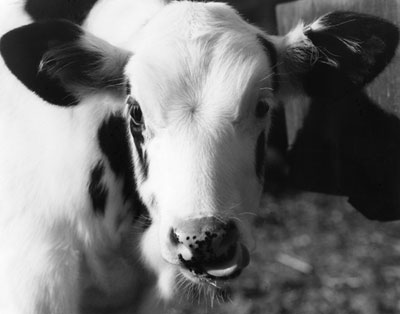All Nonfiction
- Bullying
- Books
- Academic
- Author Interviews
- Celebrity interviews
- College Articles
- College Essays
- Educator of the Year
- Heroes
- Interviews
- Memoir
- Personal Experience
- Sports
- Travel & Culture
All Opinions
- Bullying
- Current Events / Politics
- Discrimination
- Drugs / Alcohol / Smoking
- Entertainment / Celebrities
- Environment
- Love / Relationships
- Movies / Music / TV
- Pop Culture / Trends
- School / College
- Social Issues / Civics
- Spirituality / Religion
- Sports / Hobbies
All Hot Topics
- Bullying
- Community Service
- Environment
- Health
- Letters to the Editor
- Pride & Prejudice
- What Matters
- Back
Summer Guide
- Program Links
- Program Reviews
- Back
College Guide
- College Links
- College Reviews
- College Essays
- College Articles
- Back
Conventional Beef v Organic Beef: The Better Choice
All-Natural Grass-Fed Beef is better than Conventional Beef. All-Natural Grass-fed Beef is beef that comes from cows that live on pastures and are not given any drugs or hormones. They eat the grass on the pastures they live on and maybe a few crops as well. Conventional Beef on the other hand is beef that comes from cows that are confined in feedlots and eat corn and soy. Sometimes, to fatten them up, farmers will feed these cows candy, chicken-coop waste, and even remains of slaughtered animals!
All-Natural Grass-Fed cows also live healthier lives than conventional cattle, reducing their need for antibiotics. These types of cattle are also not permanently confined to their herd, which means it is harder for diseases to spread to the entire herd. They also simply aren’t allowed to have antibiotics or hormones, due to the American Grassfed Association’s labeling program. If bacteria were to become resistant to the antibiotics they could become superbugs. These cattle’s diets include grass, forage, and sometimes hay when there are no crops in the winter. Slaughter practices for these cows are also much more humane as well, whereas conventional cattle can be slaughtered at rates of 400 an hour. Organic beef is a bit more expensive than conventional beef, which is why many people still eat conventional beef.
There are many ways people are protesting the Conventional treatment of cattle. Improved beef inspection laws are helping to stop more outbreaks of bacteria and viruses. The general awareness of these problems has also been broadcasted better than before, allowing people to stay up to date with these new issues. The types of food cattle are fed has become more restricted, taking out some of the key factors that could lead to disease. The use of antibiotics and hormones is also being regulated, taking superbugs out of the equation. Many new Organic Cattle techniques are being used as well, diminishing the need for feedlots.
However, sometimes using Grass-Fed beef is not enough. “Between 2003 and 2012 there were almost 80 outbreaks or E. coli 0157 due to tainted beef, sickening 1,144 people, putting 316 is the hospital, and killing five,” states Consumer Reports. Cross contamination is a huge issue with raw meat in the United States. Beef alone is the fourth largest container of salmonella. The separation of beef is very important as well. One pound of beef could infect another 500 pounds if they aren’t separated properly.
There is also the issue of cooking the beef to a certain temperature. Beef has to be cooked to 160 degrees to kill all bacteria and viruses inside. Many people don’t check what temperature their beef is, and worse, some don’t want it cooked to 160 degrees at all. “In one 2014 E. coli outbreak, five of the 12 people who got sick had eaten a burger at one of the locations of an Ohio pub chain called Bar 145(degrees), which was named for the temperature “’of a perfectly cooked medium rare burger,’ according to the company’s website.” Consumer Reports says. Cooking beef rare or medium-rare just doesn’t cook out all the bad bacteria, increasing the risk of sickness. The same issue occurs for many other types of proteins too.
There is also the issue of storing beef properly as well. Sometimes the tiniest steps are what keep the beef from going bad. For example, picking it up last at the supermarket helps to keep the beef cold all the way home. Beef that isn’t being used should also be kept at 37 degrees or less because this keeps the bacteria from multiplying. Also, beware of cross contamination. Keep raw meats separate from other ingredients because it could contaminate vegetables and such. And remember to cook it at 160 degrees or higher to make sure that all the bacteria is cooked out, eliminating the threat of diseases.
As you can see, Organic Beef is better to buy and when it’s cooked properly, it can be an amazing dish. Buying Organic will reduce the amount of food poisoning all over the world. Unhealthy hormones and conventional cattle practices will become a thing of the past. It could even save lives around the world. So just remember; buy Organic beef!

Similar Articles
JOIN THE DISCUSSION
This article has 0 comments.

I was shocked to learn how dangerous a part of everyday life could be. It seems like we know all the proper procedures to keep our food healthy. But it also seems like sometimes we just don't care. I hope that this article raises awareness about the dangers of beef.